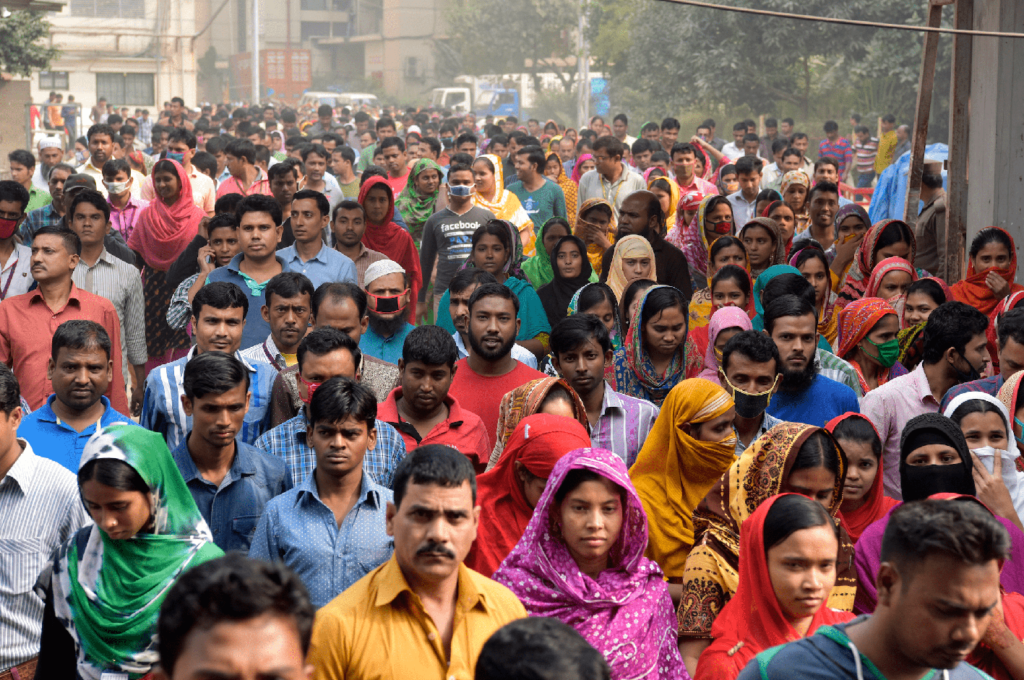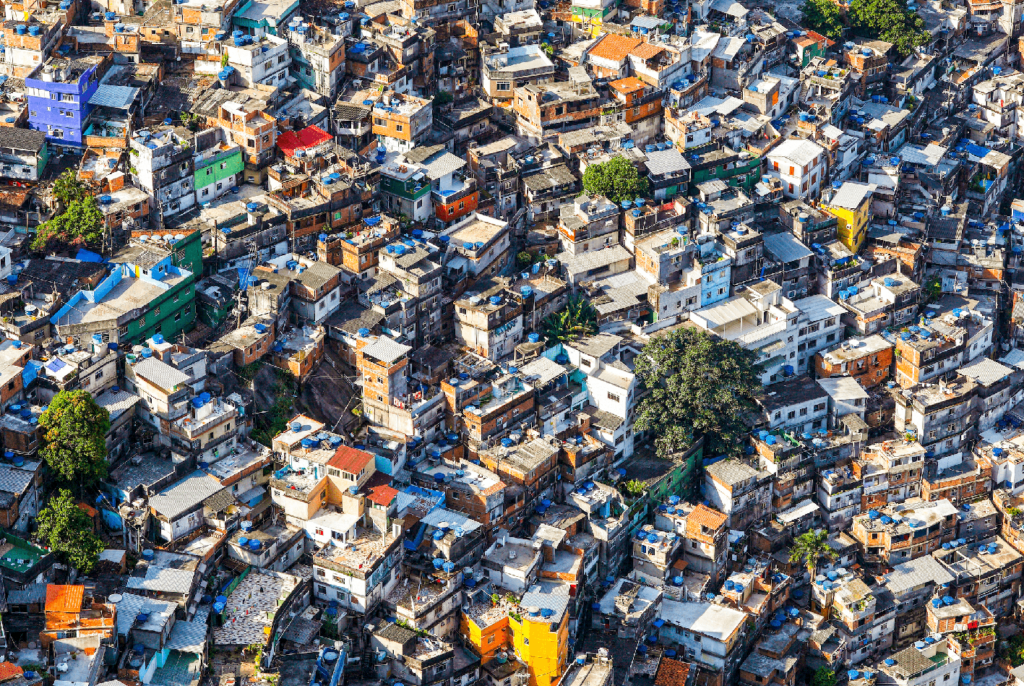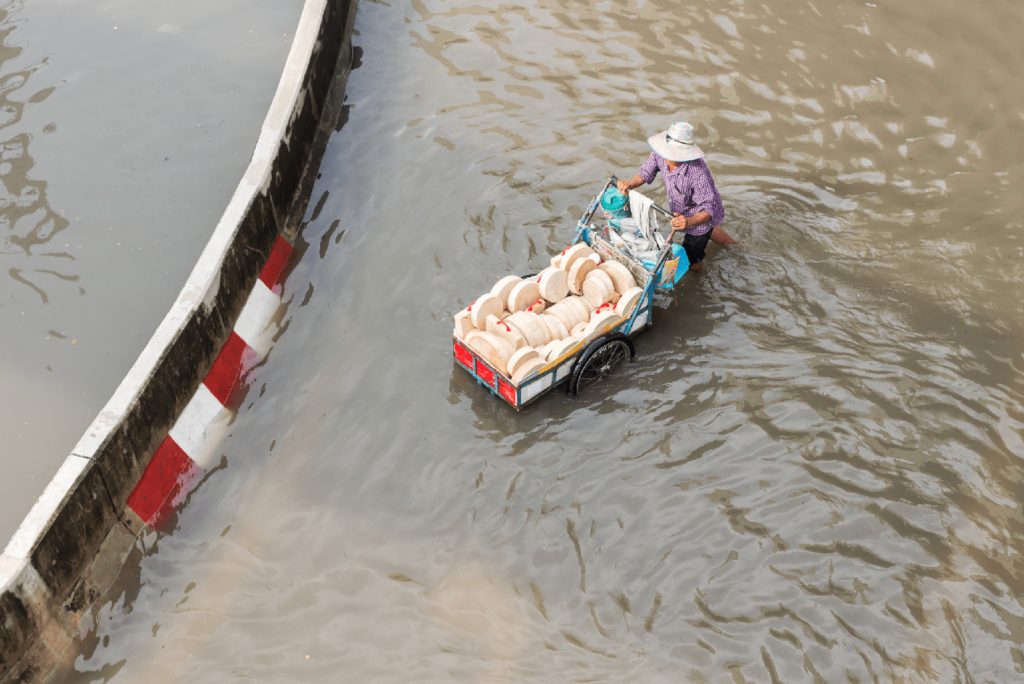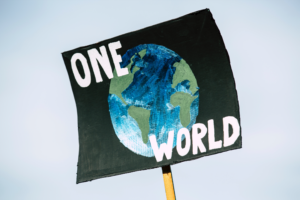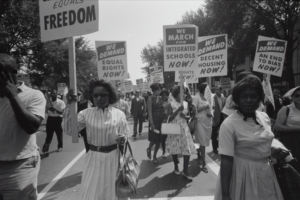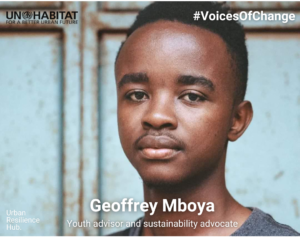The world is urbanizing rapidly. By 2050, almost 70% of the global population will reside in cities. As a result, a greater number of people are vulnerable to adverse shocks and stressors that affect cities, from natural hazards to air pollution and infectious diseases. To keep their residents safe, cities must learn to prevent and mitigate risks, and build their capacity to respond and recover from adverse events.
Urban resilience is an emerging framework that can rally different sectors, among them disaster preparedness and response, humanitarian action, urban planning, and climate change mitigation, to work toward building safer and more sustainable cities.
It views cities as complex systems composed of interconnected components — housing, water, health care or power — that each play a role in maintaining a well-functioning whole. By using a systems approach, stakeholders can better understand and anticipate the consequences that one type shock or stressor could have on different parts of the system.
Toward integrated approaches
Cities in low- and middle-income countries have struggled to respond to rapid urban growth with adequate infrastructure building. As a result, millions of people around the world live in unplanned, under-serviced neighbourhoods, often located in the more hazardous parts of cities.
In order to think about cascading failures and their impact on the interconnection between different systems, you need to acknowledge that it’s more than one system that matters.
Robin King, director of knowledge capture and collaboration at the World Resources Institute’s Ross Center For Sustainable Cities.
The global south is also where the effects of climate change are being felt most intensely, leading to increased instances of disasters caused by natural hazards or extreme weather events like tropical storms and flooding.
Governments, local communities, and development actors have historically worked in isolation from each other. When disaster strikes, humanitarian organizations have been on the frontline of the response, providing short-term relief to populations without always addressing the context in which a crisis occurs.
That approach has shown its limitations, for instance, NGOs involved in relief efforts in the aftermath of the 2010 earthquake in Haiti found themselves largely ill-equipped for the type of large-scale planning required to rebuild the city. Without the link to risk reduction, there is also the danger that recovery efforts exacerbate future risk.
“Resilience strategies are most successful when local communities are involved.”
Robin King, director of knowledge capture and collaboration, World Resources Institute’s Ross Center For Sustainable Cities
Government stakeholders also tend to operate in silos. It would be difficult to make plans for improving infrastructure in an informal settlement without taking into consideration the socio-economic makeup of its population, the health hazards caused by inadequate waste management, or the national policies that influence land tenure.
Yet the type of cooperation between municipal departments and across all levels of government that’s required in order to build cities in a way that encompasses all dimensions of sustainable development, is often lacking.
Resilience can help stakeholders tackle immediate needs while keeping long-term sustainable goals in mind, in line with global frameworks including the Paris Agreement on Climate Change, the Sustainable Development Goals, the Sendai Framework for Disaster Risk Reduction, and the New Urban Agenda.
“It includes things like thinking about how a bus line is going to be able to continue to operate going through an area that has really poor drainage, which is often an informal area, during the monsoon season,” King explained.
Measuring resilience
In the past few years, various actors have developed toolkits and frameworks to guide their work through a resilience and systems lens, among them the International Rescue Committee, the International Federation of Red Cross and Red Crescent Societies and the Global Facility for Disaster Risk Reduction and Recovery.
UN-Habitat’s City Resilience Profiling Tool, which the agency uses when working in partnership with cities, is one of the most comprehensive of these frameworks. It uses a phased approach to collect data on risks and hazards, identify relevant stakeholders, and map various urban systems, before providing a set of recommendations for cities to implement.
“We basically do an MRI of an urban system, and provide the city with a diagnosis,”
Esteban Leon, head of the Urban Resilience Profiling Programme at UN-Habitat.
The methodology is highly participative and involves multiple stakeholders, which helps them take ownership of the process and move to implementing the recommendations. And it places a focus on making evidence-based, data-driven recommendations, which Esteban said prevents the process from being politicized by local governments.
“When you present this publicly in front of everyone, it’s very difficult for politicians to deny that this is evidence,” he explained. “It serves as an accountability mark.”
Resilience strategies are most successful when local communities are involved, King added. The impacts of shocks can sometimes play out at a hyperlocal level, and communities are best positioned to voice their needs and possible solutions to challenges, she explained.
In Pune, India, waste pickers were integrated into the formal waste management system thanks to the participation of local civil society organizations in policy reform, an outcome that allowed the city to save on the costs typically associated with centralized waste management.
“The overall solution was better for everybody,” King said. “It was better for the poor people, it was better for the people who needed their waste picked up, and it was better for the city overall because they didn’t have to raise taxes as much.”
A multidisciplinary approach
Still, cities can face many hurdles when designing and implementing resilience strategies, one of them being the high level of collaboration that’s required between urban actors. That’s why the Resilient Cities Network is championing the creation of chief resilience officer positions within municipalities and regional governments.
CROs can act as a single point of contact for cross-cutting initiatives, said Lauren Sorkin, executive director of the Resilient Cities Network.
“We’ve often joked that the chief resilience officer is another name for a ‘chief silo buster,’ and that you have to go around and knock down the walls between your colleagues to solve complex challenges.”
Another challenge lies around data collection. Low- and middle-income countries often lack the capacity to gather quality data, which then creates knowledge gaps. Part of UN-Habitat’s work with the City Resilience Profiling Tool lies in helping cities build their capacity to gather data. In Asunción, Paraguay’s capital, the collaboration with UN-Habitat led the government to start collecting gender-disaggregated data, Leon said.
In instances where official data sources are lacking, resilience practitioners should not hesitate to partner with local communities, said RCN’s Sorkin. When Chennai’s CRO Krishna Mohan Ramachandran took office, he partnered with local universities to conduct surveys and needs assessments in informal settlements.
When the COVID-19 pandemic struck, the municipality was able to set up food delivery programs in those communities within days, based on the data that was previously collected.
“You can activate those multiple benefits because you know the communities, but you have to start that work as part of your resilience plan and strategy. And that is the responsibility of those resilience officers from day one,” Sorkin explained.
The current pandemic, Sorkin says, has further demonstrated how interconnected the various components of resilience can be, and why cities shouldn’t focus on one area at the expense of another.
“We’ve confirmed that the systems approach is the only approach. We’re only as strong as our weakest link,” she said.
Article originally published in Devex

